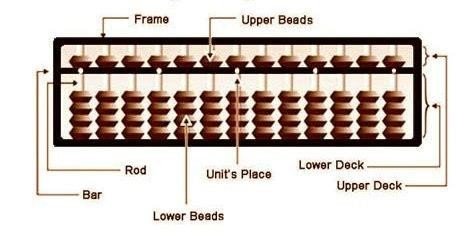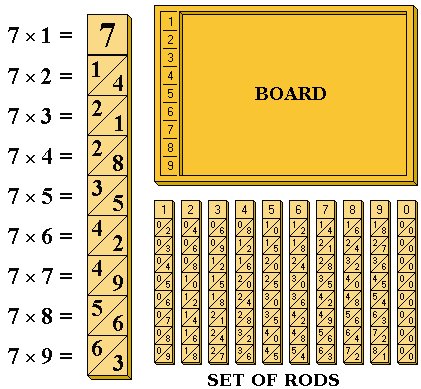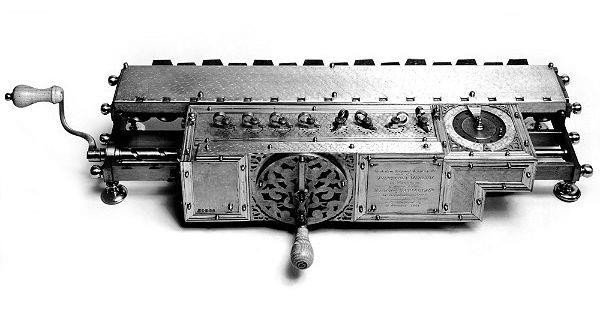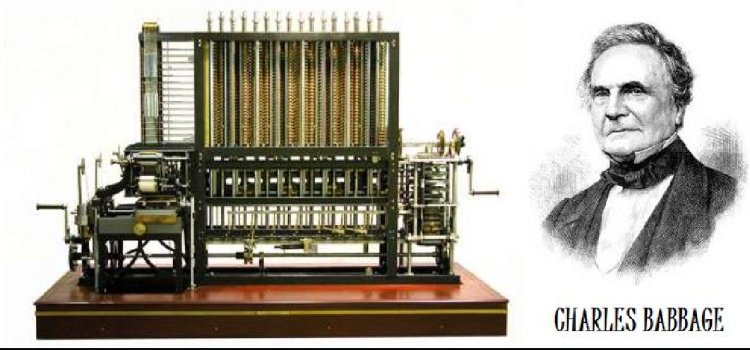Development of Computer
Basic Computer Knowledge

Development / History / Evolution of computer
Actually speaking electronic data processing does not go back more than just half a century i.e. they are in existence merely from early 1940’s. In early days when our ancestor used to reside in cave the counting was a problem. Still it is stated becoming difficult.
When they started using stone to count their animals or the possession they never knew that this day will lead to a computer of today. People today started following a set of procedure to perform calculation with these stones, which later led to creation of a digital counting device, which was the predecessor the first calculating device invented, was known as ABACUS.
The Abacus
Abacus is known to be the first mechanical calculating device. Which was used to be performed addition and subtraction easily and speedily? This device was a first develop Ed by the Egyptians in the 10th century B.C, but it was given it final shape in the 12th century A.D. by the Chinese educationists.
Abacus is made up of wooden frame in which rod where fitted across with rounds beads sliding on the rod. It is dividing into two parts called ‘Heaven’ and ‘Earth’. Heaven was the upper part and Earth was the lower one. Thus any no. can be represented by placing the beads at proper place.

Types of Abacus
| Type | Features | Origin |
|---|---|---|
| Counting Board | Earliest flat board with lines and pebbles | Mesopotamia |
| Suanpan | 2 beads up, 5 down per rod | China |
| Soroban | 1 bead up, 4 down per rod | Japan |
| Roman Hand Abacus | Portable board with grooves and beads | Ancient Rome |
| Nepohualtzintzin | Mesoamerican version with 13 rows | Ancient Mexico |
Structure:
-
A rectangular wooden frame
-
Vertical or horizontal rods/wires
-
Beads that slide along the rods
-
Divided into two parts: upper part (Heaven) and lower part (Earth) in some types
Advantages of Abacus
- Simple to Use:
Easy for anyone to learn and operate. - No Electricity Required:
Fully manual — works anywhere, anytime. - Helps Improve Mental Calculation:
Regular abacus use improves memory, concentration, and mental math skills. - Portable and Lightweight:
Easy to carry around. - Durable:
Made from wood or metal, lasts long without technical issues.
Disadvantages of Abacus
- Limited Functions:
Can only perform basic arithmetic operations (addition, subtraction, multiplication, division). - No Data Storage:
Cannot store previous results or complex data. - Manual Operation:
Requires continuous human effort; no automation. - Slow for Complex Calculations:
Not suitable for large numbers or advanced math like algebra, calculus, or statistics. - Obsolete for Modern Needs:
Replaced by calculators and computers for faster, complex, and automated calculations.
Fun Facts
-
The word Abacus comes from the Greek word ‘Abax’, meaning ‘counting board’ or ‘calculating table.’
-
In Japan, national Abacus competitions are still held, and Soroban is taught in schools.
-
Abacus users can perform complex mental calculations faster than people using calculators — this technique is called Anzan (mental Abacus).
-------------------------------------------------------------
Napier's Bones
As the necessity demanded, scientist started inventing better calculating device. In thus process John Napier’s of Scotland invented a calculating device, in the year 1617 called the Napier Bones.
In the device, Napier’s used the bone rods of the counting purpose where some no. is printed on these rods. These rods that one can do addition, subtraction, multiplication and division easily.

Who Invented Napier’s Bones and When?
-
Inventor: John Napier (1550–1617), a Scottish mathematician, physicist, and astronomer
-
Year: 1617
-
Known for: Also introducing the concept of logarithms for simplifying large calculations.
Structure and Components of Napier’s Bones
Napier’s Bones consists of:
-
A set of rectangular rods or strips (usually 9 or 10)
-
Each rod contains a multiplication table for a digit (1–9), displayed in ten rows.
-
Each square is divided diagonally from the top-right corner to the bottom-left corner.
-
The upper triangle contains the tens digit of the product, and the lower triangle contains the units digit.
Example Rod for 7:
| × | 7 |
|---|---|
| 1 | 07 |
| 2 | 14 |
| 3 | 21 |
| 4 | 28 |
| 5 | 35 |
| 6 | 42 |
| 7 | 49 |
| 8 | 56 |
| 9 | 63 |
How Did Napier’s Bones Work?
For Multiplication:
-
Arrange the rods corresponding to each digit of the number to be multiplied side by side.
-
Locate the row for the multiplier number.
-
Read the numbers in the row, adding diagonally where necessary.
-
The final sum gives the product.
For Division and Square Root:
-
Modified procedures were applied using similar rods to perform long division and extract square roots.
Advantages of Napier’s Bones
- Simplified Complex Calculations: Made multiplication and division easier, especially for large numbers.
- No Formal Mathematical Training Required: Ordinary people could perform complex arithmetic by following simple instructions.
- Portable and Durable: Lightweight, easy to carry and made of bone, wood, or metal.
- Reduced Human Error: By eliminating the need to memorize multiplication tables, it reduced calculation mistakes.
- Foundation for Future Devices: Influenced the design of other mechanical calculators like the Pascaline and Leibniz Calculator.
Disadvantages of Napier’s Bones
- Still Manual: Required physical manipulation and human attention for reading and adding values.
- Limited to Basic Arithmetic: Could perform only multiplication, division, and square roots — no addition, subtraction, or advanced calculations.
- Time-Consuming for Very Large Numbers: Though easier than manual multiplication, it could still be slow for extremely large calculations.
- Fragile Materials: Made from ivory, wood, or bone, so prone to breakage or wear over time.
- Required Additional Mental Work: Users needed to add diagonal numbers manually during multiplication operations, which could still lead to small errors.
Historical Significance of Napier’s Bones
-
It was one of the first mechanical aids for calculation.
-
Marked a milestone in the evolution of computational devices.
-
Inspired other inventors like Blaise Pascal (Pascaline) and Gottfried Wilhelm Leibniz (Leibniz Calculator).
-
Its concept of simplifying operations via physical tools laid the groundwork for mechanical and digital calculators.
| Aspect | Details |
|---|---|
| Inventor | John Napier (Scotland) |
| Year | 1617 |
| Purpose | Simplify multiplication, division, and square root operations |
| Material | Ivory, bone, wood, or metal rods |
| Advantages | Simplified calculations, portable, reduced errors, influenced future designs |
| Disadvantages | Manual, limited functions, slow for large numbers, fragile |
| Legacy | Inspired mechanical calculators, foundational in computing history |
Fun Fact
John Napier also introduced the use of logarithms, which further revolutionized mathematical computations by transforming multiplication and division into simpler addition and subtraction processes.
--------------------------------------
Pascal's Calculator
In the year 1642, Blaise Pascal a French scientist invented an adding machine called Pascal’s calculator, which represents the position of digit with the help of gears in it.

Leibnz Calculator
In the year 1671, a German mathematics, Gottfried Leibniz modified the Pascal calculator and he developed a machine which could perform various calculation based on multiplication and division as well.

Analytical Engine
In the year 1833, a scientist form England knows to be Charles Babbage invented such a machine. Which could keep our data safely? This device was called Analytical engine and it deemed the first mechanical computer.
It included such feature which is used in today’s computer language. For this great invention of the computer, Sir Charles Babbage is also known as the father of the computer

What's Your Reaction?













